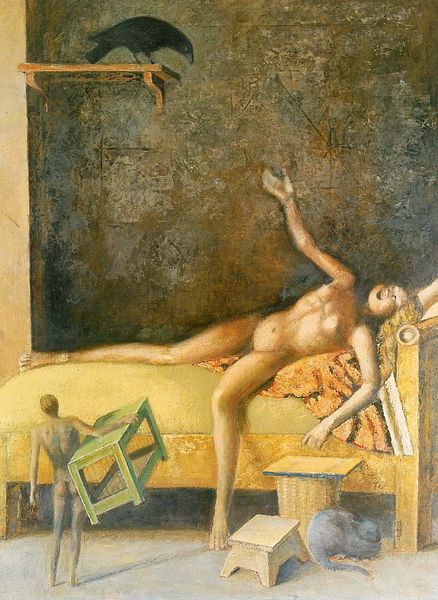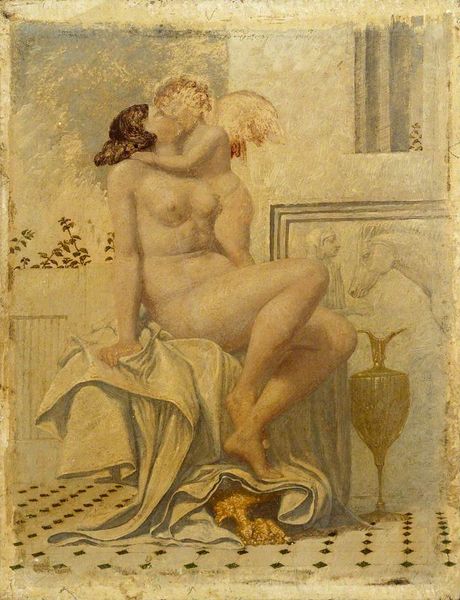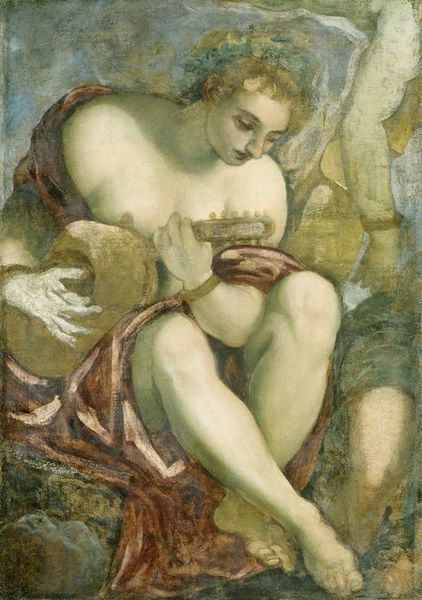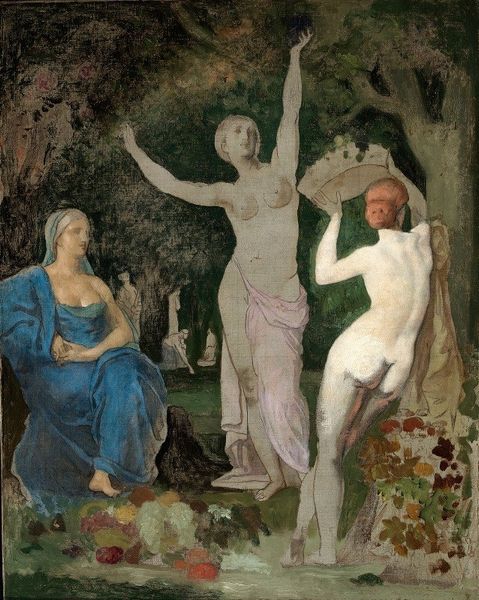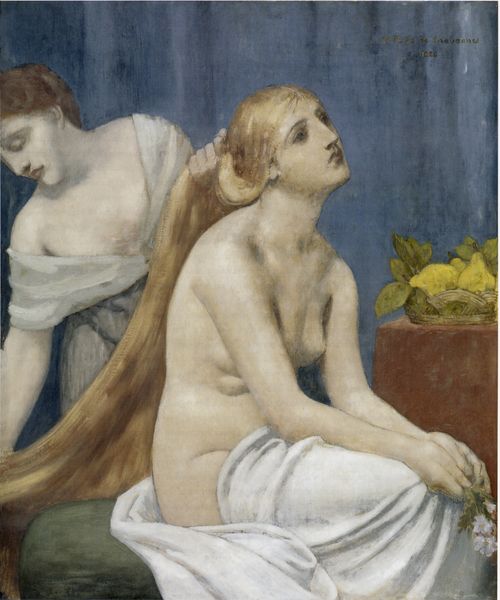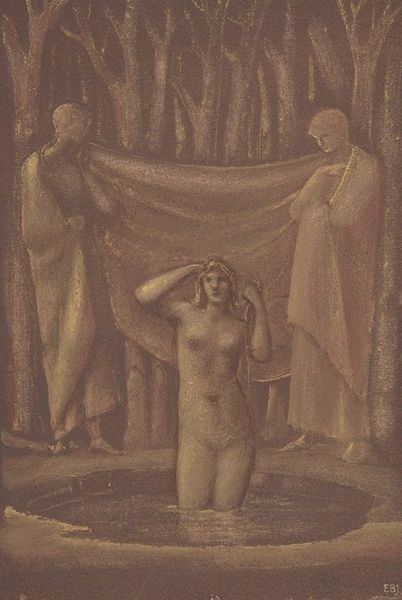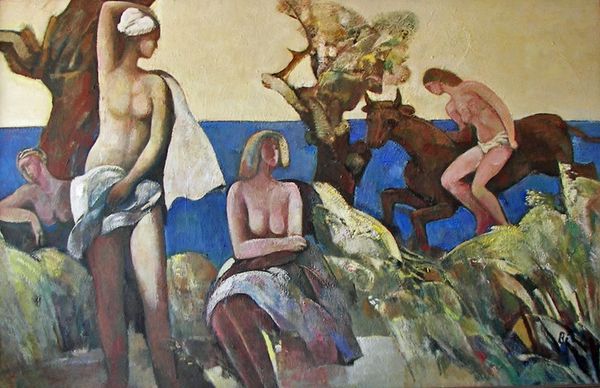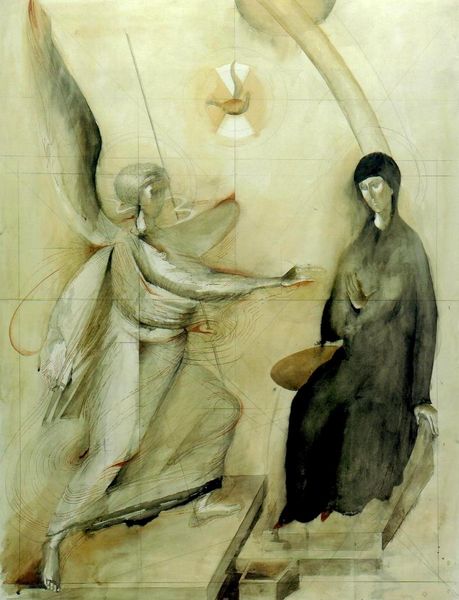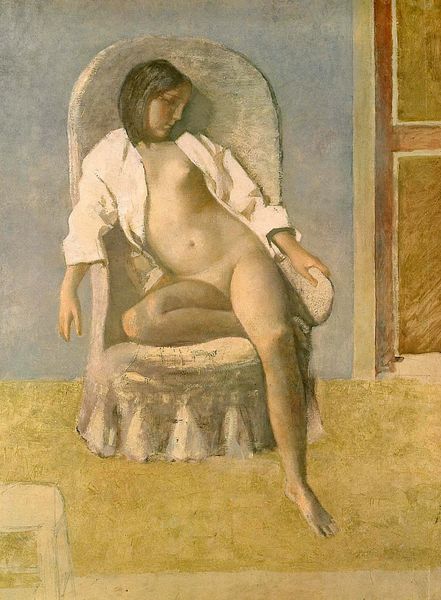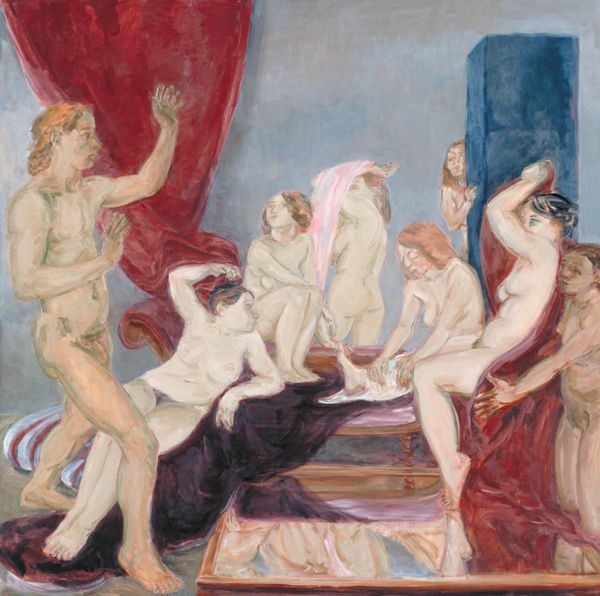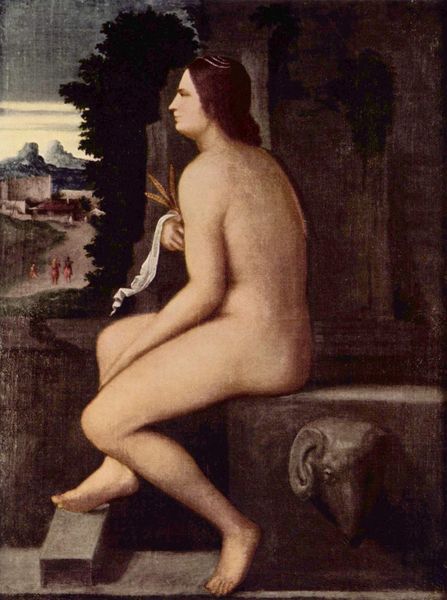
Dimensions: 170 x 180 cm
Copyright: Balthus,Fair Use
Curator: Balthus's 1978 oil on canvas, "The Cat in the Mirror," presents us with a striking scene. What are your initial thoughts on the painting’s composition? Editor: It strikes me as rather unsettling, even dreamlike. The almost sickly coloration of the figure set against that mottled brown backdrop. And that pose—simultaneously languid and contorted. Curator: Balthus, throughout his career, often explored themes of adolescence, voyeurism, and a certain ambiguous sexuality. His paintings are not always easy, often stirring complex reactions relating to the male gaze. We can delve into how this work situates the female subject and explore how she occupies space. Editor: From a formal standpoint, look at how the artist utilizes layering of objects and fabric to create a sense of confined space; that patterned blanket bisects the composition and creates this claustrophobic effect, amplifying the tense atmosphere of this rather unusual interior scene. The subdued tonality of the palette feels like a calculated constraint, emphasizing the almost hyper-real quality of the pale nude figure. Curator: And that cat, perched so unnaturally upright, mirrors her gaze and further intensifies the composition's disquiet. It raises questions around her passivity, vulnerability and perhaps even a loss of innocence in a society that sexualizes young girls. Editor: But observe how that reflected light on the body gives it a luminous quality. Balthus is using sfumato, reminiscent of Leonardo da Vinci. It's subtle but significant. Curator: Absolutely. We must also remember how cultural contexts surrounding representation of young women have changed since Balthus made this work. Its importance resides partly in our capability of deconstructing its meanings. Editor: What truly captivates me is the artist’s manipulation of perspective; the stage-like composition gives one a sense that one is peeking behind a curtain; this use of representational space allows us a specific kind of engagement with its imagery. The figure and the composition exude ambiguity. It’s unsettling. Curator: Precisely; its layers of meanings are designed to provoke reaction and, hopefully, conversation around gender dynamics within art history itself. Editor: This piece demonstrates just how crucial understanding formal aspects can be; color, light, composition. To explore the emotional depth of an image such as this one allows for the artwork to speak about what is within the painting, beyond subject.
Comments
No comments
Be the first to comment and join the conversation on the ultimate creative platform.
